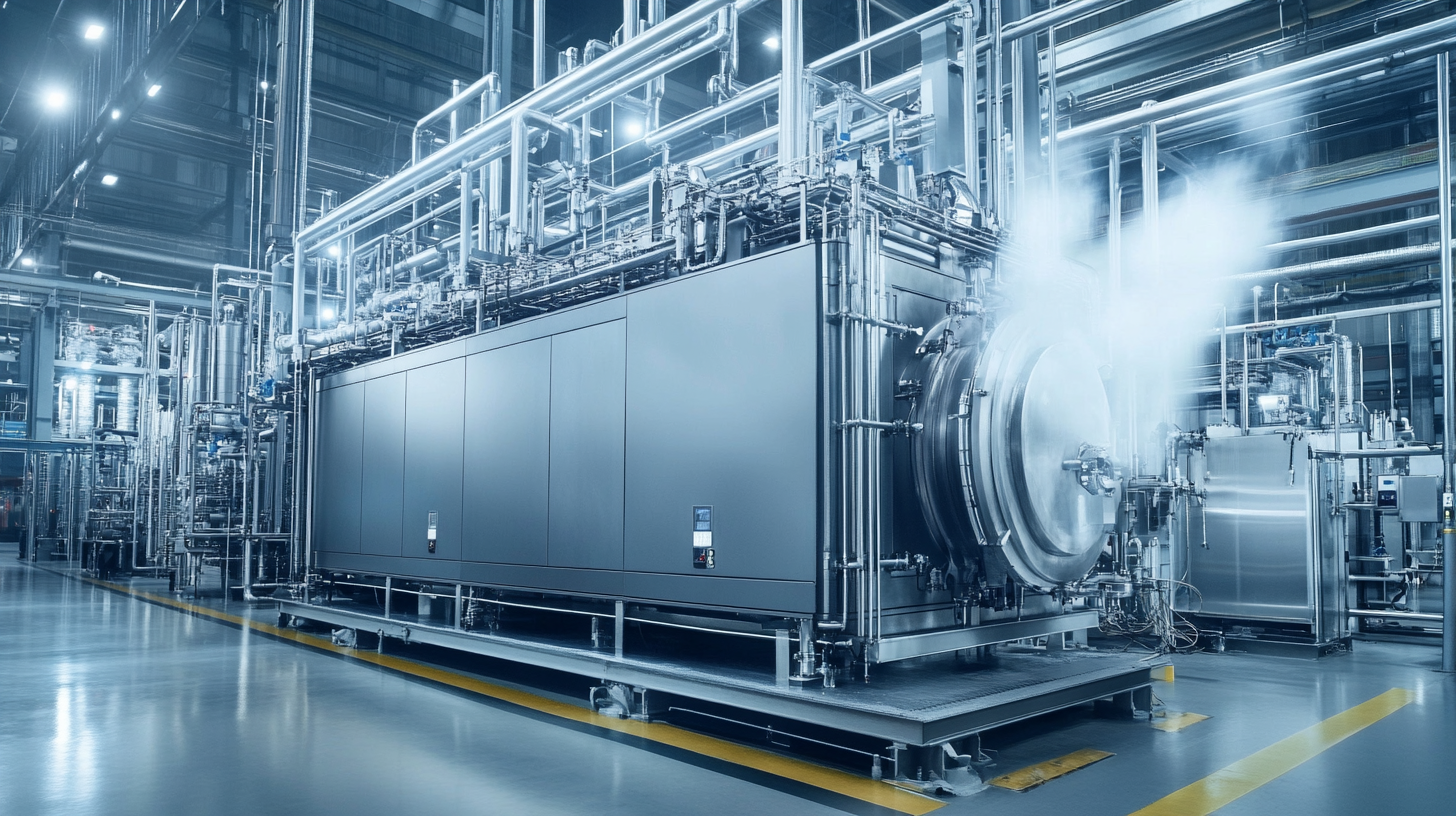Challenges Faced in Vacuum Sintering Furnace Operations Impacting Productivity
The manufacturing landscape has seen significant advancements in technology, yet the operation of a Vacuum Sintering Furnace remains a critical aspect for companies aiming to enhance productivity and product quality. As industries increasingly rely on this sophisticated process for a variety of applications—from aerospace components to medical devices—the challenges associated with vacuum sintering operations cannot be overlooked. The complexity of these furnaces and the precision required for optimal results often lead to inefficiencies that impede production timelines and elevate operational costs.
To fully grasp the implications of these challenges, it's essential to examine several key factors influencing the efficiency of Vacuum Sintering Furnace operations. These include temperature control, process variability, and maintenance issues, all of which play a significant role in determining the overall productivity of the sintering process. Addressing these challenges is not only vital for improving throughput but also for ensuring the consistent quality of sintered products. In this blog, we will delve deeper into these operational hurdles and explore potential strategies for overcoming them, thereby paving the way for more efficient and productive vacuum sintering practices.

Challenges in Maintaining Optimal Temperature Control in Vacuum Sintering Furnaces
Maintaining optimal temperature control in vacuum sintering furnaces is critical for ensuring efficient operations and high-quality end products. One of the primary challenges in this area is achieving uniform temperature distribution throughout the furnace. Variations in temperature can lead to inconsistent material properties and result in defects such as warping or incomplete sintering. Therefore, operators must monitor temperature gradients closely and make necessary adjustments to maintain even heat distribution, which can be difficult due to the dynamic nature of the sintering process. Another significant challenge is the precision of temperature control systems. Many vacuum sintering furnaces rely on sophisticated temperature sensors and control algorithms. However, sensor drift or calibration errors can introduce inaccuracies, potentially causing the furnace to operate outside the desired temperature range. To mitigate this risk, regular maintenance and calibration of the temperature monitoring equipment are essential. Moreover, leveraging advanced data analytics can help in predicting temperature fluctuations, allowing operators to take proactive measures to adjust settings before issues arise. The impact of external factors such as ambient temperature and pressure changes can also complicate temperature control in vacuum sintering operations. These variables can affect the heat transfer process within the furnace, requiring operators to be vigilant and responsive to changes in the operating environment. Implementing robust feedback loops and automated control systems can help alleviate some of these challenges, providing real-time adjustments to maintain optimal conditions for sintering. By addressing these issues, manufacturers can significantly enhance productivity and ensure the quality of their sintered products.

Impact of Material Properties on Sintering Cycle Efficiency and Quality
The efficiency and quality of the sintering cycle in vacuum furnace operations are primarily influenced by the properties of the materials being processed. Different materials possess unique characteristics, such as thermal conductivity, melting point, and viscosity, which directly affect the heating rate and the overall sintering dynamics. For instance, materials with high thermal conductivity can lead to quicker heating, enhancing productivity but may also risk uneven temperature distribution. This variability can compromise the final product's structural integrity, making it crucial to understand the interplay between material properties and sintering conditions.
Moreover, the presence of impurities or variations in particle size can significantly impact the sintering process. Impurities may interfere with the densification and lead to defects in the final product, while variations in particle size can affect the packing density and flowability during the sintering cycle. Fine particles typically promote better contact and faster sintering rates; however, if they are too fine, they may also lead to agglomeration issues. Striking a balance between particle sizes and ensuring material purity is essential to achieving optimal sintering outcomes.
Additionally, the selection of appropriate sintering temperatures is crucial, as different materials have varying thermal thresholds. Operating a vacuum sintering furnace at a temperature that is too high can cause melting, while temperatures that are too low may not allow for adequate densification. Therefore, understanding the specific properties of each material and adjusting the sintering cycle accordingly can substantially improve both productivity and the quality of the final products.

Common Equipment Failures and Their Effect on Production Downtime
In the world of vacuum sintering furnace operations, unplanned downtime due to equipment failures poses a significant threat to productivity. Manufacturing industries report that unexpected machine breakdowns can not only halt production lines for extended periods but also lead to substantial financial losses. A recent study highlighted that global manufacturers collectively lose nearly $1 trillion annually because of equipment failures, underscoring the urgency of addressing such challenges.
The impact of common equipment failures, particularly in critical machines like sintering furnaces, can be catastrophic. These failures often stem from inadequate maintenance practices, such as the reliance on reactive maintenance rather than proactive strategies. While some sectors have begun to embrace predictive maintenance to monitor machine health, many manufacturers still find themselves grappling with the consequences of unexpected downtimes. This disruption not only damages their credibility but also adversely affects long-term profitability.
Moreover, industries such as semiconductor manufacturing demonstrate a pressing need for better maintenance strategies, with reports indicating that many setups still operate on a run-to-fail basis. This highlights the necessity for investing in advanced monitoring and analytics technologies to predict when equipment is likely to fail. By shifting to predictive maintenance models, companies can minimize downtime, enhance operational efficiency, and ultimately improve their bottom line, fostering a more reliable manufacturing environment.

Strategies for Improving Feedstock Preparation to Enhance Sintering Performance
In the realm of vacuum sintering furnace operations, one of the foremost challenges lies in the preparation of feedstock. The quality and consistency of feedstock directly influence the sintering process, impacting both productivity and the final properties of the sintered components. According to a report by the International Journal of Advanced Manufacturing Technology, up to 67% of defects in metal components can be traced back to poor feedstock preparation. This underscores the critical need for enhanced strategies in feedstock handling to ensure optimal sintering performance.
To improve feedstock preparation, several strategies can be implemented. First, particle size distribution is a vital factor; it has been shown that a uniform particle size can lead to a more homogeneous packing, resulting in a denser sintered material. Research indicates that implementing advanced particle size analysis techniques can increase the packing efficiency by up to 20%. Additionally, the use of binder systems during the preparation phase can significantly enhance the flow properties and reduce the occurrence of defects during sintering. A study by the American Society of Metallurgists reported that incorporating a polymer binder could decrease shrinkage variance by 15%, contributing to consistent sintering outcomes.
Furthermore, the optimization of mixing processes is crucial. A well-mixed feedstock ensures that additives and metal powder are evenly distributed, which can enhance the overall mechanical properties of the sintered product. Data from the Manufacturing Innovation Institute suggests that employing ultrasonic mixing can achieve a more homogenous mixture, potentially improving tensile strength by 10-15% in the final product. By addressing these key areas in feedstock preparation, manufacturers can significantly elevate the productivity and performance of vacuum sintering furnace operations.
Evaluating the Role of Process Monitoring Technologies in Productivity Improvement
In the realm of vacuum sintering furnace operations, productivity challenges have long been an industry concern. Many manufacturers struggle with operational inefficiencies that can significantly impact output. According to a report from the International Journal of Manufacturing, inefficiencies in manufacturing processes can lead to a 20-30% loss in potential productivity. This underscores the need for an integrated approach to process management, particularly through advanced monitoring technologies.
Implementing process monitoring technologies such as real-time data analytics and machine learning algorithms can significantly enhance productivity in vacuum sintering operations. A case study presented at the recent Powder Metallurgy conference revealed that companies utilizing predictive maintenance solutions reported a 25% reduction in unplanned downtime. This capability allows operators to anticipate and address potential equipment failures before they escalate, thus maintaining a more consistent production flow.
Furthermore, process monitoring offers the ability to optimize sintering parameters based on real-time feedback. According to data from the Materials Science and Engineering journal, fine-tuning dwell times and temperature profiles using adaptive control systems can increase the density and mechanical properties of sintered materials, leading to enhanced product quality and reduced scrap rates. As productivity remains a critical focus for manufacturers, the integration of these innovative technologies is not just advantageous—it is becoming essential for staying competitive in the evolving marketplace.
